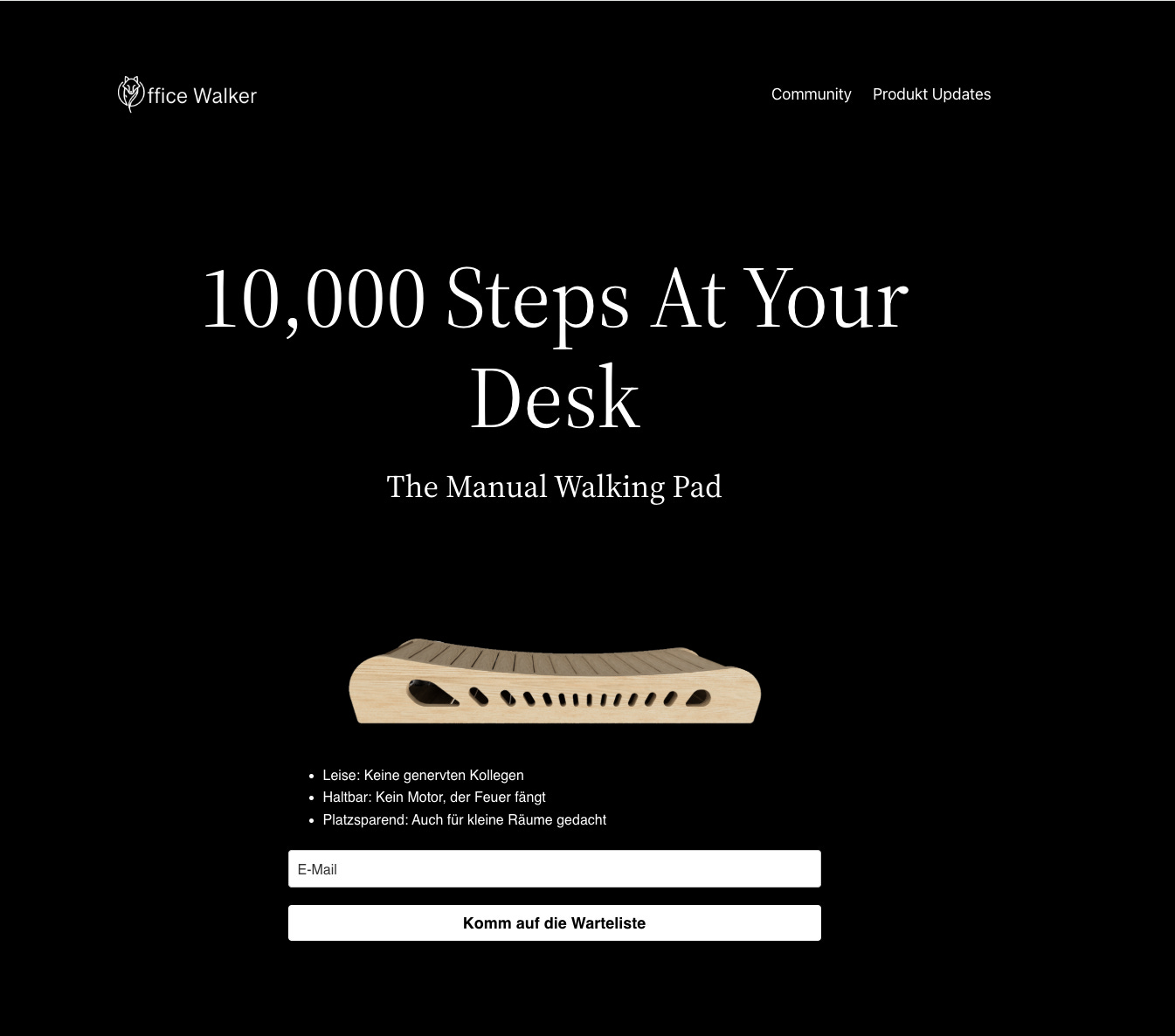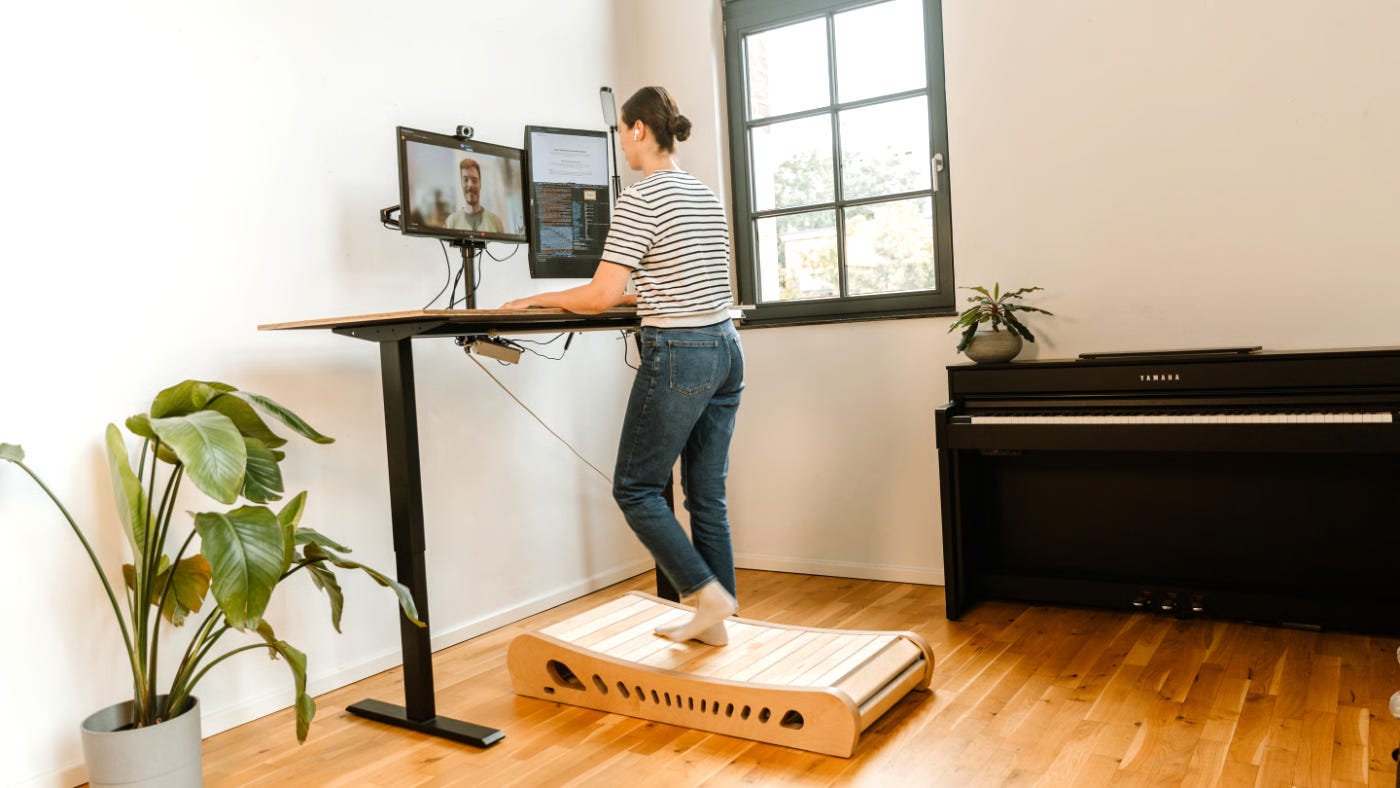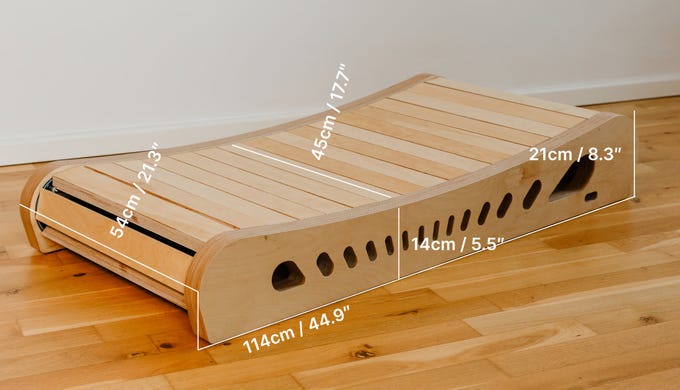"Sitting is the New Smoking": How Johannes Kettmann Brings His Walking Pad to Kickstarter After €30,000 Investment
"Happy Bootstrapping" Volume #32
After the Covid pandemic, moving to the suburbs, and having two children, Johannes Kettmann barely moved anymore – back pain was the result.
His solution: Walking pads. But after three defective electric treadmills in two years and €1,000 in losses, the physicist and software developer is now developing his own mechanical walking pad – the Office Walker. His Kickstarter campaign is already a success: Over €400,000 has been raised so far.
This is a summary of Episode 144 of the “Happy Bootstrapping” Podcast (German).
The Founding Story: From Frustration Purchase to Mission
Johannes’ journey began with a classic problem: “Sitting is the new smoking,” he says, and he means it seriously. After the pandemic, he worked remotely as a developer, no longer exercised regularly, and increasingly developed back problems. Walking pads seemed like the perfect solution – until they gave up the ghost after three to nine months.
“These electric treadmills aren’t made for continuous operation. After three months, the first one broke,” Johannes explains frustratedly. The attempt to repair the devices usually failed due to unavailable spare parts. The Chinese manufacturers often didn’t respond to inquiries at all. So he bought a new one – and another new one.
At some point came the revelation: “Why not just build one myself?” As a physicist with technical understanding and software developer with an entrepreneurial mindset, it seemed feasible. Today, a year and a half later, the courage has paid off: His Kickstarter campaign has already raised over €400,000 – an impressive validation with over €30,000 in personal investment.
The Product: Mechanical Instead of Electric
The Office Walker differs fundamentally from electric walking pads: It has no motor. Instead, Johannes uses a mechanical system with a cam disk that translates the movement of the feet into the rotation of the running surface. “At first I thought it would be easy. The iteration cycles in hardware are brutally slow,” he reflects on the development.
The technical challenges were enormous. The first commissioned engineer promised six weeks of development time, then took six months and ultimately delivered an unusable result. Johannes had to take everything into his own hands, build prototypes, test, discard, and start over.
Particularly complex: the acoustics. Mechanical systems are naturally louder than electric motors. Johannes hired acoustics experts via Upwork, tested various materials and damping systems. The goal: A walking pad that’s quiet enough for Zoom calls.
Business Model: The Gap in the Market – and How It Works
Johannes deliberately positions the Office Walker in the middle: €899 as an early bird price on Kickstarter, later €1,199 in regular sales. This fills the gap between the €250 imports from China that break after a few months and the €2,700 Walkolution premium product.
His calculation worked: The Kickstarter campaign has already raised over €400,000 – far above his minimum goal of 200 sold units. The 7,000 people on his waitlist, built up mainly through organic SEO, have paid off.
The problem with hardware remains: After production, shipping, and taxes, often only 20-30% margin remains. Of the €30,000 he has already invested, nothing has flowed back so far. His freelance work financed the entire development – until now.
Marketing: Transparency as Strategy
Johannes’ marketing strategy is unconventional: maximum transparency. On YouTube, he documents every prototype, every failure, every small progress. In his Discord community, he openly discusses design decisions with interested parties. This “build in public” mentality creates trust and connection.
“Every week I’m close to giving up – but I’m now too deeply invested to just stop.”
His SEO strategy works: 7,000 waitlist entries without paid advertising. He writes detailed blog articles about walking pads, ergonomics, and health in the home office. Google ranks him highly for relevant keywords like “mechanical walking pad” or “walking pad continuous operation.”
A guerrilla marketing highlight: He posted himself with his prototype in front of the Zalando office in Berlin. The post went viral in the tech community.
Technology Stack: Hardware Meets Software
As a software developer, Johannes had to rethink. Instead of writing code, he now works with CAD software, orders prototypes from manufacturers in China, waits weeks for deliveries, and then discovers errors that mean further weeks of delay.
“With software, I can change a line of code and test immediately. With hardware, I have to order a new prototype, wait, assemble, and only then test.”
Added to this is the complexity of supply chains: Different components from different suppliers must fit together perfectly.
The software component is minimal: A simple app is supposed to optionally track statistics later. But the core product works completely without electronics or software – deliberately, to reduce complexity and potential sources of error.
Challenges: Patents and Doubts
The biggest current challenge: Walkolution, the premium provider, may already be threatening patent trouble. Johannes must prove that his mechanical system is sufficiently different. He has consulted patent attorneys, researched, and adapted his construction.
“There are videos on YouTube of mechanical treadmills from the 1920s. That shows that the concept is not new,” Johannes argues. Nevertheless, the legal dispute is a risk that costs him money and nerves.
The emotional burden is enormous. Every week he faces the question: Continue or give up? The already invested €30,000 and the 7,000 people on the waitlist keep him going. But the doubts remain.
Hardware development also means physical work: Assembling prototypes yourself, testing, disassembling again. As a software developer, he wasn’t used to that. Added to this is the uncertainty: Does the product really work long-term? Will customers love or hate it?
What I Learned in the Interview
Johannes’ openness about the downsides of hardware development was refreshingly honest. His biggest insight: Hardware is 10x harder than software – not just technically, but also emotionally and financially.
I found his SEO success with 7,000 waitlist entries without budget totally surprising. This shows that content marketing still works today, even for physical products.
His transparency on YouTube and Discord creates a community that carries him through when doubts overwhelm. The Kickstarter success with over €400,000 shows: Authenticity and “build in public” pay off – even with hardware.
Johannes’ Learnings
Hardware ≠ Software: The iteration cycles are brutally slow, every mistake costs weeks
Transparency binds: Documenting every setback publicly creates trust and community
SEO works: Even for physical products, content marketing can become the main driver – 7,000 waitlist entries prove it
Patent research is mandatory: Finding prior art can save millions in legal costs
Buy in experts: Acoustics, mechanics, logistics – as a founder, you can’t do everything yourself
Perseverance pays off: Over €400,000 on Kickstarter shows that staying power was the right decision
The gap in the market: Between cheap China imports and overpriced premium products lies enormous potential
Happy Bootstrapping is a German podcast where I interview bootstrapped founders, indie hackers, and solopreneurs about their startup journeys.
Over the years, I’ve connected with many successful entrepreneurs who have built e-commerce shops, SaaS platforms, mobile apps, content businesses, or hybrid models.
Furthermore I am a bootstrapper myself and growing my DevOps-as-a-Sercice and Web Operations Company “We Manage”.





